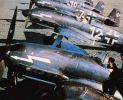
Heinkel He 100528 viewsDisappointed by the loss of the Luftwaffe's fighter orders to BFW and it's Bf 109 and the failure of the He 112, Heinkel set out to build a lighter and faster fighter that was also cheaper and easier to build. Even though the He 100 broke several world speed records, the RLM was solidly supportive of the Bf 109 and failed to order the He 100 into production. Six prototypes were eventually sold to the Soviet Union and three He 100D-0 went to Japan. The three He 100D-0's being armed with two MG 17 and a 20mm MG/FF. The remaining 12 He 100D-1 fighters were used to form a Heinkel-Rostock factory defense unitSep 23, 2004
|
|
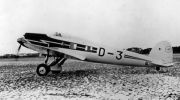
Heinkel He 70539 viewsThe Heinkel He 70 was an aircraft designed as a fast mailplane, inspired by the Lockheed Orion. Its streamlining inspired many other designs. Although useful, it had a relatively brief commercial career, before it was replaced by types which could carry more passengers. As a combat aircraft it was a not a great success, because it rapidly became outdated. Sep 23, 2004
|
|

focke wulf 189471 viewsThe Focke Wulf 189 was a reconnaissance aircraft which served with the Luftwaffe (German Airforce) during World War II. Only 846 were built.
The 189 was used mainly on the Eastern Front and was known both as ‘The Flying Eye’, due to the superb all-round vision afforded by its distinctively glazed fuselage, and as the Uhu (Owl). The 189C was an attempt by Focke Wulf to build a ground attack version of it's successful recon plane.
Sep 23, 2004
|
|
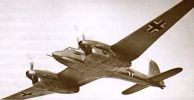
Focke-Wulf 187479 viewsThis plane was excellent when it appeared, but ignored in favor of the Bf110. The pilots in Norway were enthusiastic about its potential and demanded quantity production, but instead they were ordered to give the planes back to Focke-Wulf because they were only in inofficial use. Some Fw187 were also used in the aerial shooting school in Vaerlose, Denmark.
In the facility defense role, they shot down several aircraft. Remarkable was the great maneuvrability; the Rechlin test pilot Heinrich Beauvais was of the opinion that it circled comparable to the Bf109 and rolled only slightly slower than the Bf109, while spped and range were superior. But the disastrous (but good-looking) Me210 and Me410 design was preferred by the air ministry Sep 23, 2004
|
|
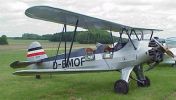
Focke-Wulf Fw 44466 viewsThe Focke-Wulf Fw 44 was a two-seater biplane known as the Stieglitz (Goldfinch).
It was produced by Focke-Wulf for pilot training and aerobatics. The Luftwaffe used the Fw 44C - the final version - almost universally as a trainer during World War II.
Sep 23, 2004
|
|
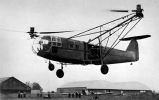
focke achgelis fa223521 viewsSep 23, 2004
|
|
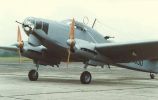
Focke-Wulf Fw 58829 viewsThe Focke-Wulf Fw 58 was an excellent aircraft. It made its first flight in 1935 as a six-seat light transport. The prototype, Fw 58 V1, first flew in 1935 as a six-seater transport. The second prototype was in military guise, having machine guns fitted both in the nose and dorsally. The next production run was of the Fw 58B, some of which were bombers and some others being fitted with floats - the Fw 58BW. The main production model was the Fw 58C, a light transport. Eight were delivered to Lufthansa during 1938/9 as commercial transports.
Large numbers of bothe Fw 58Bs and Fw 58Cs were used by the Luftwaffe being used for light transport, communications and ambulance duties in large numbers even, on occasions, for crop spraying. Sep 23, 2004
|
|
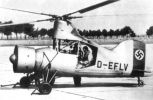
flettner-265515 viewsSep 23, 2004
|
|
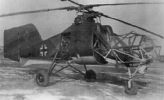
Fl282-1472 viewsSep 23, 2004
|
|
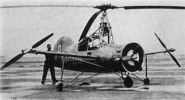
fl185465 viewsSep 23, 2004
|
|
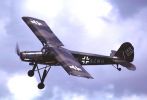
Fieseler Fi 156 Storch478 viewsThe Storch was first flown in 1936. The fabric-covered Storch observation monoplane served the German Forces throughout World War Two wherever the Germans saw combat. With ten times the life expectancy of the Bf 109 fighter, the Storch ("Stork") proved to be a rugged Short Take Off and Landing (STOL) airplane that gained the respect of all its pilots. Over 2,900 Fi 156s were produced. Today, more than 30 Fi 156s and their brethren have survived in Europe and North America, and about 20 are still capable of flying today.
Sep 23, 2004
|
|
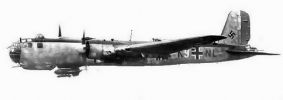
Heinkel He 177520 viewsThe He 177 was a try to devellop a real strategic bomber. The idea to combine two motors on one propeller lead to heavy problems. Due to this and other misstakes in construction, the plane became a deadly trap for many crews and got the the nick-name "Lighter of the Reich". The He 177 saw first operational service in 1942 and was mainly used for maritime warfare in the west. In the mid of 1944 87 He 177 flew an attack on Velikye Luki at the east-front. At the end of the war one machine was modified to carry a german atomic bomb.
Sep 23, 2004
|
|
|
|